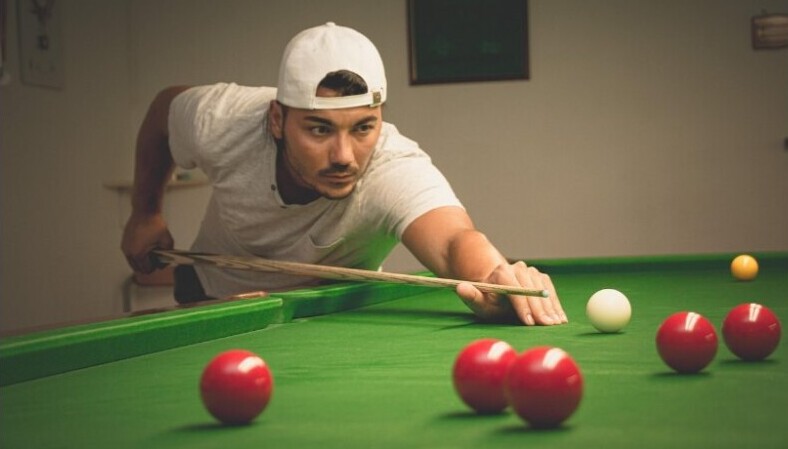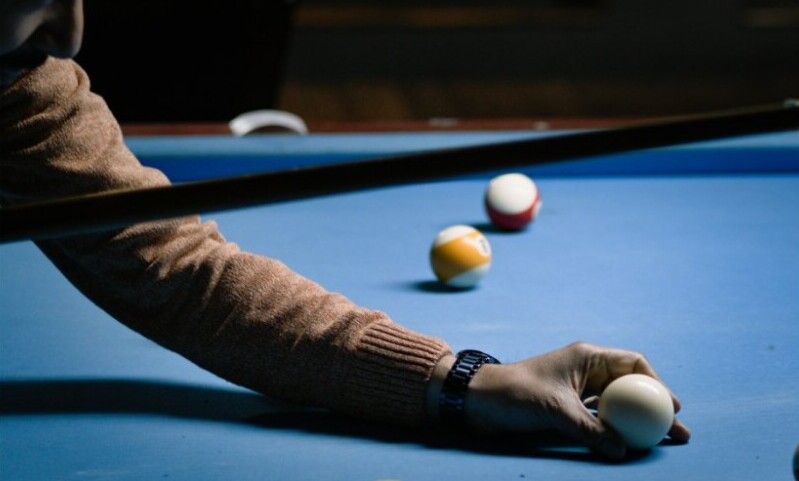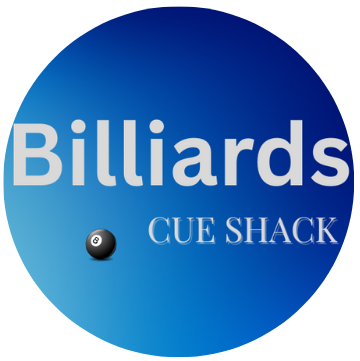 Nailing a consistent stroke is the heart of reliable cue sports, like pool and snooker. If you’ve ever watched a seasoned player sink ball after ball, what you’re seeing is the result of a steady and practiced stroke. It’s not just about strength, but more so, it’s about developing a repeatable movement that sends the cue ball exactly where you want, every time.
Nailing a consistent stroke is the heart of reliable cue sports, like pool and snooker. If you’ve ever watched a seasoned player sink ball after ball, what you’re seeing is the result of a steady and practiced stroke. It’s not just about strength, but more so, it’s about developing a repeatable movement that sends the cue ball exactly where you want, every time.
Building this kind of consistency can be tricky. Even if you can occasionally pull off a great shot, the ability of repeating it, especially when the pressure’s on, really separates the casual player from the one who controls the game. If you’re looking to take your stroke up a notch, here’s my guide to what actually works.
Understanding the Fundamentals of the Stroke
The stroke is the actual arm movement you use to make contact with the cue ball. Sounds simple, but there’s more to it than just swinging your arm.
- Smoothness and Straightness: The real key to accuracy. A smooth stroke helps the cue stay straight, which leads to better results, especially when you’re shooting under pressure.
- Why Consistency Matters: Anyone can make a good shot now and then, but reliable performance comes from repeating good technique, even when things get tense.
It is shown over and over that a straight stroke is one of the first things coaches focus on in new players for good reason. Once you get a feel for it, your confidence grows and your accuracy jumps.
Quick Recommendation: Our blog is filled with tips and materials for your billiards experience. If you're seeking a pool cue to up your pool game, we recommend Cuetec Avid Era Sneaky Pete Style Pool Cue.
Key Elements of a Good Stroke
Accuracy Comes First
- Precise Cue Action: Focus on sending the cue in a straight line. This means everything from your eyes, bridge, and grip work in sync.
- Accuracy is the Foundation: New players start here. If you can’t hit where you’re aiming, spin and power don’t matter much.
Follow Through for Control
- Develops Over Time: Learning to push the cue through the ball, instead of stopping on contact, can feel weird at first. Practicing follow through is what really lets you add spin (draw, follow, or English) and control the cue ball’s path.
Hand Position: What Works and Why
There isn’t a one size fits all rule when it comes to hand position, but there are a couple of things that make a big difference:
- Natural Comfort: You want your hand to feel comfortable and balanced, without any strain or awkwardness.
- Arm Angle and Shot Type: As a basic guideline, your upper arm should point straight down to the floor when your cue tip meets the cue ball. This puts your elbow at about a 90 degree angle.
Some quick ways to check:
- If your arm is greater than 90°, your grip hand is probably too far back on the cue.
- If your arm is less than 90°, you’re gripping too close to the bridge.
Over time, this natural positioning becomes automatic. At first, though, it helps to pause and check it before each shot.
Getting the Grip Just Right
 Your grip has a massive impact on your stroke. Maybe even more than you’d think.
Your grip has a massive impact on your stroke. Maybe even more than you’d think.
- Loose and Relaxed: Imagine holding a baby’s hand. You want just enough control so the cue doesn’t slip, but if you’re squeezing tightly, it becomes stiff and jerky.
- Cue Position: Let the cue rest close to the second joint of your fingers. The thumb should wrap comfortably underneath or around the cue for stability.
- Straight Down: When you grip, your hand should point straight down, not off to the side. This keeps your movement smooth and natural.
Getting the grip right feels awkward for almost everyone at first, but it starts to feel natural with a bit of focused practice.
Stroke Mechanics: How to Move for Consistency
Consistent arm motion is the core of a good stroke. Here’s what to focus on:
- Pendulum Action: The best strokes move like a pendulum, using the elbow as a pivot. The upper arm stays steady, and only the forearm swings back and forth.
- Less is More: I’ve found that trying to “help” the cue with my body or shoulder only causes more problems. Keeping my upper arm still and using the forearm only gives me better results.
- Check Your Shoulders: If your shoulder moves or drops during the stroke, it usually adds unwanted sideways motion. Staying steady through the shot does wonders for accuracy.
Quick Recommendation: Our blog is filled with tips and materials for your billiards experience. If you're seeking a pool cue to up your pool game, we recommend Cuetec Avid Era Sneaky Pete Style Pool Cue.
Why Follow Through is Super Important
Follow through might sound like a technical detail, but it actually makes a difference you can see on the table.
- For Spin and Control: All those fancy shots, such as draw, follow, and side spin, require the cue to travel through the cue ball, not just to it. Cutting short on the follow through kills the effect and leads to inconsistent results.
- Acceleration, Not Just Speed: I try to think of accelerating through the cue ball, not just hitting it fast. Pushing the cue all the way through lets the tip stay on line and gives the ball a truer roll.
- How Far?: A good rule is to follow through about as far as the length of your bridge, so the cue travels a solid, steady distance after impact. Practicing this with drills (like draw and follow drills) builds muscle memory and consistency.
Building Consistency Through Practice
Mastering a consistent stroke doesn’t happen overnight. It’s about steady improvement and smart practice. Having a plan and using exercises regularly is what really sets strong players apart from casual ones.
Practice Drills That Actually Work

- Line Up Drill: Line up five to ten balls in a row and shoot each one with the same stroke. Focus just on your arm path and follow through.
- Draw/Follow Drill: Place a ball close to the pocket and try drawing the cue ball back or following it forward each time. Notice how clean strokes change the ball’s behavior.
- Frozen Rail Drill: Work on shots along the rail to improve straightness. Line up the cue ball and an object ball along the rail, then shoot as straight as possible to sink the ball. This highlights wobbles in your stroke and helps make adjustments.
Dealing with Pressure
The best test of consistency is under pressure. Playing games with friends or adding small challenges, like setting up shots when people are watching, helps translate smooth stroke practice into real match conditions. Try little competitions or make up your own rules to keep yourself accountable and make practice sessions more interesting.
Common Questions & Troubleshooting
How do I know if my stroke is straight?
- Set up a straight in shot, aiming to send the cue ball down the same path each time. Watch if it veers off or stays true. Videoing yourself (even on a phone) helps spot side to side movement you might not feel. Doing this regularly will give you a benchmark for progress.
Why does the cue stick wobble sometimes?
- Most often, tension in the grip or moving your shoulder are the issues. Loosen the grip and keep your body quiet for a smoother stroke. If you feel the need, shake your hand a little before setting up to relax those fingers.
I can’t follow through. What am I doing wrong?
- Try starting your backswing a bit farther back. Focus on slowly accelerating forward, not jabbing. Practicing in slow motion helps build better habits. Also, check if you’re gripping too tightly, as it can stop the cue from moving freely through the shot.
Takeaways and Your Next Steps
Building a consistent stroke changes everything about how you play cue sports. It’s not just about aiming, but about creating a movement you can trust on every single shot. Focusing on grip, hand position, pendulum motion, and good follow through will get you where you want to be.
Action Steps for Consistent Stroke
- Spend five minutes before every session focusing purely on straight, slow strokes. Doing this as a warm up builds the foundation for every shot you’ll take.
- Double check your hand position and grip at the start of every practice. Take a second to adjust and reset if needed.
- Try simple drills like the line up, draw/follow shots, or the frozen rail drill to build muscle memory and get a feel for straightness.
- Ask a friend or record yourself shooting a few straight in shots. Reviewing the footage helps spot arm movement or grip changes you might have missed. Making tiny adjustments based on what you see can quickly improve your stroke’s consistency.
Getting a consistent stroke is absolutely satisfying. If you stick with it, you’ll soon feel, and see, some real improvement in your cue sports adventures. Keep practicing, keep adjusting, and enjoy your time at the table. The progress will add up faster than you think.
Quick Recommendation: Our blog is filled with tips and materials for your billiards experience. If you're seeking a pool cue to up your pool game, we recommend Cuetec Avid Era Sneaky Pete Style Pool Cue.

I’ve been playing casually for a few years now but consistency is definitely where I struggle most. This article really helped break things down in a way that makes practice feel more purposeful. I’m especially curious about the part on keeping a relaxed grip. Is there a recommended drill to help train that muscle memory so it becomes second nature during an actual game?
There are many ways to work on your cue grip for better performance. A few drills I’ve used and still do are warm up strokes, which in billiards is called feathering. This process is when you’re aiming at the cue ball and taking your stroke movements with out actually driving through the cue ball, while paying attention to the feel of the cue in hand and adjusting your grip to what feels more comfortable, but also smoothly stable in your stroke. Adding to this drill is lining up a ball for straight in shots and focusing your stroke mechanics while driving the cue ball into the object ball to pocket. These are basic drills that are great for anyone who’s looking to enhance these matters, and it does wonders in training the muscle memory in your grip and stroke in finding that balance.